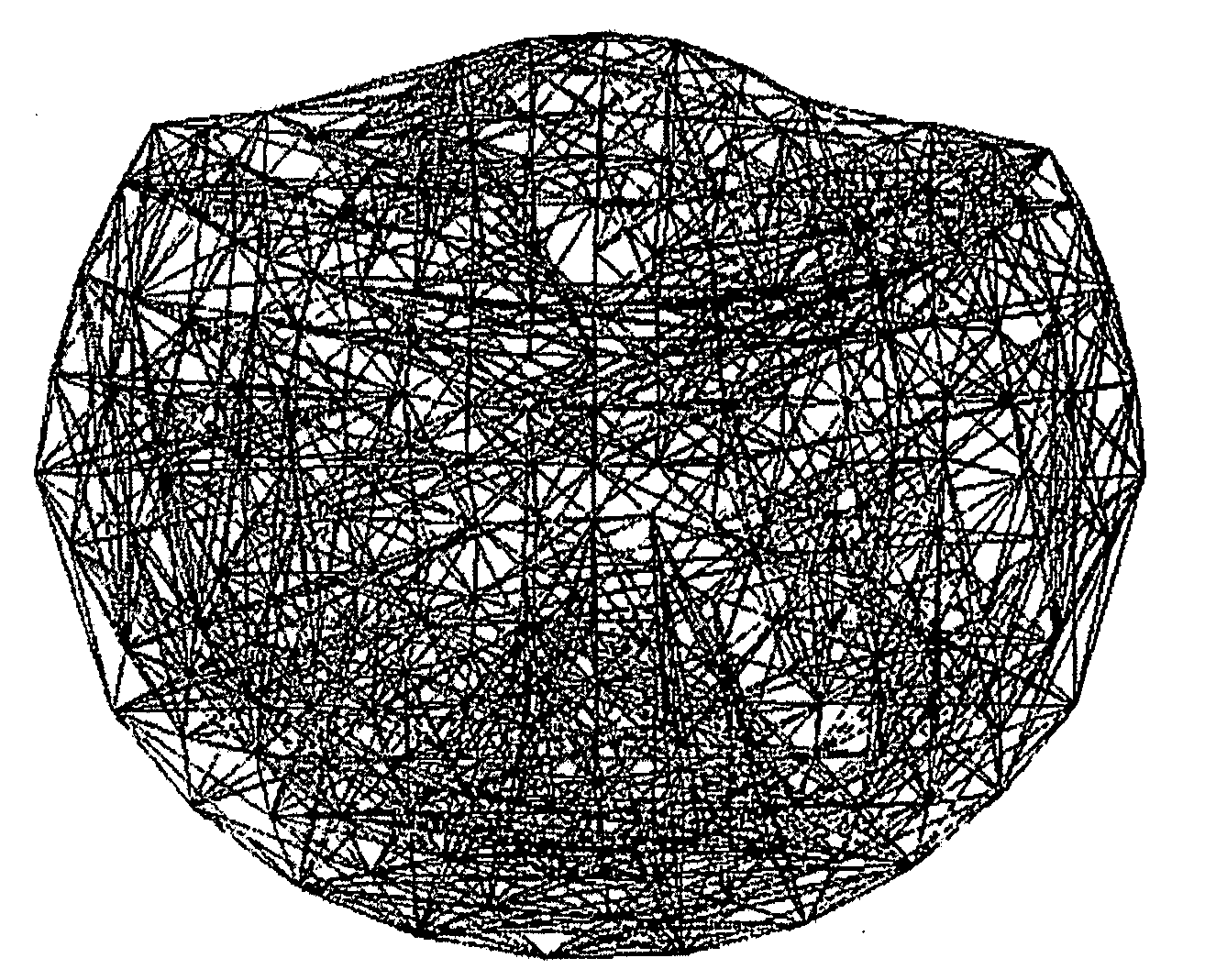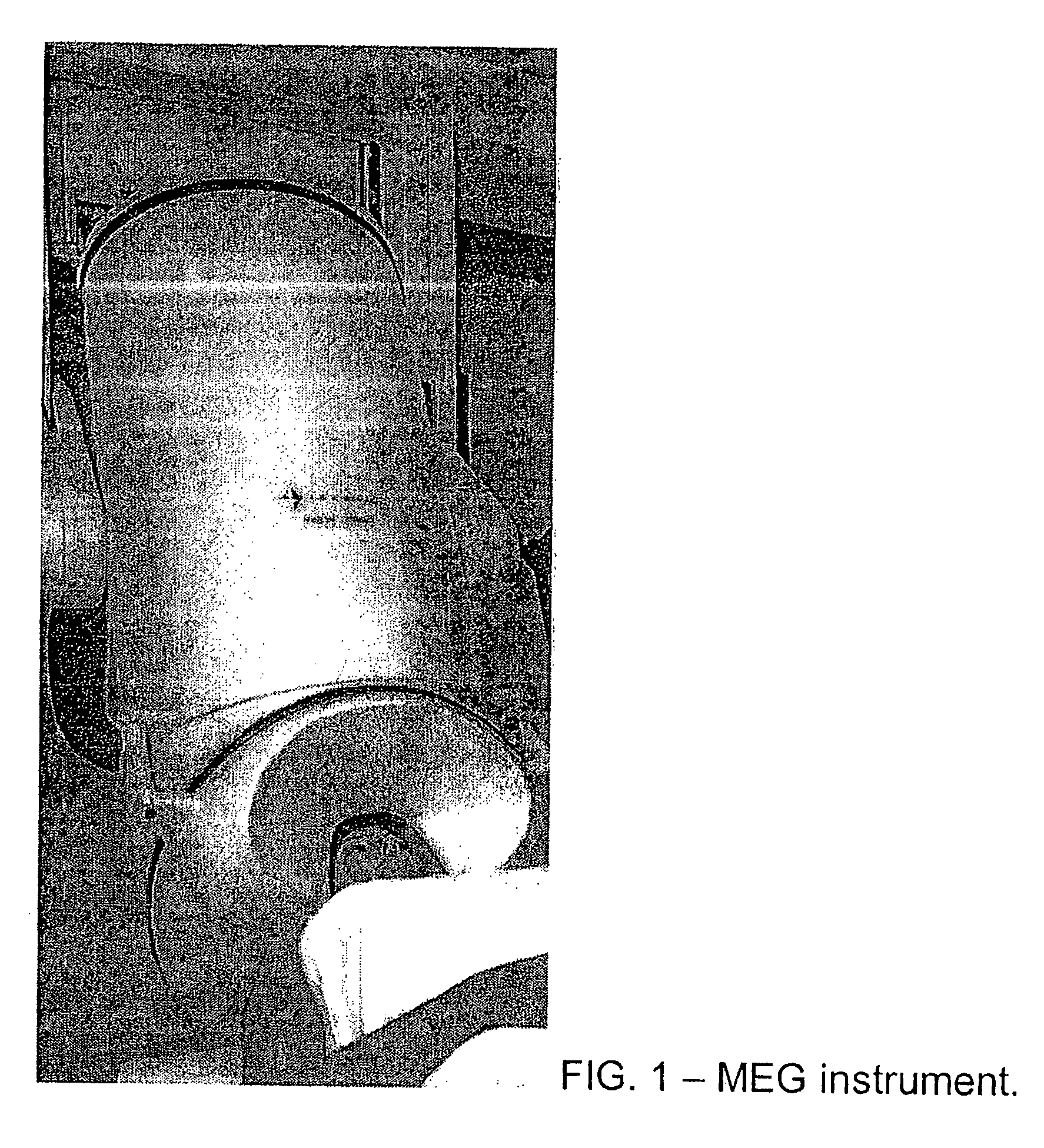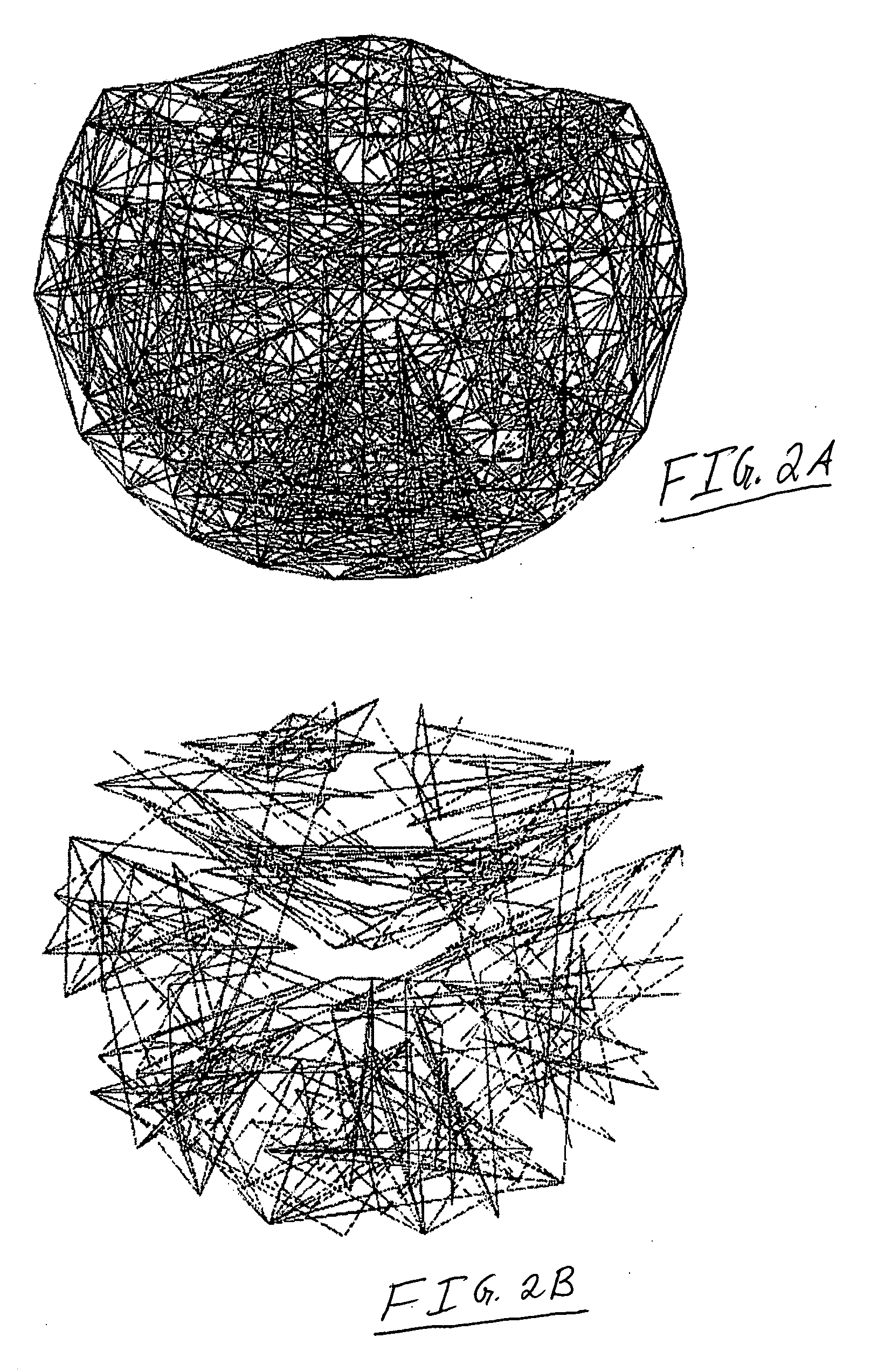Analysis of brain patterns using temporal measures
a technology of brain pattern and time series, applied in the field of neurologic analysis, can solve the problems of a huge and growing problem, no good tests of brain function available, and complicated research and treatment efforts, and achieve the effect of low cost and high throughpu
- Summary
- Abstract
- Description
- Claims
- Application Information
AI Technical Summary
Benefits of technology
Problems solved by technology
Method used
Image
Examples
example 1
[0043] Magnetoencephalography (MEG) can be used in elderly subjects and in subjects with MCI and AD.
[0044] In one example, a fixation task and MEG are used to assess the dynamic status or dynamic function of the brain in three groups of elderly subjects (77.1±1.5 y, mean ±SEM, N=1 1): normal (N=4, 76.5±2.1 y), subjects with MCI (N=4, 75.7±3.7 y), and subjects with AD (N=3, 79.7±0.3 y). Data is acquired from 248 axial gradiometers (Magnes 3600 WH, 4-D Neuroimaging) while subjects fixate on a spot for 45 s, and were preprocessed to remove cardiac artifacts or eye blink artifacts.
[0045] After prewhitening the time series by fitting an AutoRegressive Integrative Moving Average (ARIMA) model and taking the residuals, all pairwise, zero-lag, partial cross correlations are calculated, providing estimates of the strength and sign (positive, negative) of direct synchronous coupling between neuronal populations at 1 ms temporal resolution.
[0046] An analysis of covariance is performed in wh...
example 2
Methodology
[0056] The subject lies supine on a bed and is instructed to look at a spot in front of them for 1 minute. The subjects are asked to keep their eyes fixated on the spot and not to blink. Then they close their eyes for 3 more minutes, and this is the end of the test. MEG data from the fixation period are used for all analyses. In one embodiment, the data acquired during the eyes closed condition are useful for identifying and removing signal artifacts, such as the cardiac artifact.
[0057] MEG Instrument Data is acquired using the MEG instrument. Subjects lie on a bed in the magnetically shielded room and MEG signals are acquired from 248 axial gradiometers (0.1-400 Hz, sampled @ 1017 Hz, Magnes 3600 WH, 4-D Neuroimaging, San Diego, Calif.) during the whole duration of the experiment (˜4 min).
[0058] Data preprocessing. Cardiac artifacts may be removed using an event-synchronous subtraction method. Due to the very short duration of the eye-fixation period (1...
example 3
[0069] Synchronous dynamic brain networks are visualized by using prewhitened (stationary) magnetoencephalography signals. In one example, data is acquired from 248 axial gradiometers. After fitting an autoregressive integrative moving average model, and taking the residuals, all pairwise, zero-lag, partial cross correlations PCCIJ0 between the i and j sensors were calculated, providing estimates of the strength and sign (positive and negative) of direct synchronous coupling between neuronal populations at a 1-ms temporal resolution. In one example, 51.4% of PCCIJO were positive, and 48.6% were negative. Positive PCCIJO occurred more frequently at shorter intersensor distances and were 72% stronger than negative ones, on the average. On the basis of the estimated PCCIJO dynamic neural networks are constructed (one per subject) showing distinct features, including several local interactions. These features were robust across subjects and can serve as a blueprint for evaluating dynami...
PUM
 Login to View More
Login to View More Abstract
Description
Claims
Application Information
 Login to View More
Login to View More - R&D
- Intellectual Property
- Life Sciences
- Materials
- Tech Scout
- Unparalleled Data Quality
- Higher Quality Content
- 60% Fewer Hallucinations
Browse by: Latest US Patents, China's latest patents, Technical Efficacy Thesaurus, Application Domain, Technology Topic, Popular Technical Reports.
© 2025 PatSnap. All rights reserved.Legal|Privacy policy|Modern Slavery Act Transparency Statement|Sitemap|About US| Contact US: help@patsnap.com



